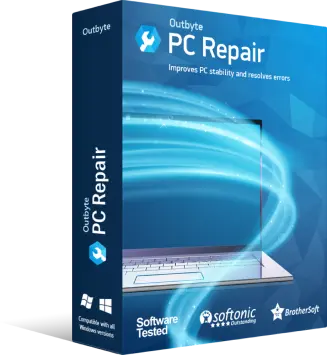Repair Utility
- File name: pc-repair-setup.exe
- Tool''s Developer: Outbyte
- Certified by: Symantec
- Download Size: 24 MB
- Downloaded: 1,143,473 times
-
Rating:

 Start Download
Start Download
Windows Operating Systems



802.11 Wireless Drive Adapter
The 802.11 Wireless Drive Adapter is a popular tool for connecting external storage devices to a network without the hassle of cables. It leverages Wi-Fi technology to enable seamless file sharing, backups, and media streaming across devices. However, like any technology, it can encounter issues that disrupt its functionality. Understanding the root causes of these problems and knowing how to resolve them ensures a smooth user experience. Let’s explore the common challenges users face, step-by-step solutions, and key takeaways for optimizing your wireless drive adapter.
1. Causes of Issues with 802.11 Wireless Drive Adapters a. Interference from Other Wireless DevicesThe 802.11 standard operates on the 2.4 GHz or 5 GHz frequency bands, which are also used by many household devices like microwaves, Bluetooth speakers, and cordless phones. Overlapping signals can cause interference, leading to slow transfer speeds, dropped connections, or an inability to detect the adapter.
b. Outdated Firmware or DriversWireless adapters rely on firmware to communicate with your router and operating system. If the firmware is outdated, the adapter may fail to function optimally or lose compatibility with newer network protocols like Wi-Fi 6. Similarly, outdated drivers on your computer can prevent the adapter from being recognized.
c. Incorrect Network ConfigurationMisconfigured network settings are a common culprit. For instance, if the adapter’s IP address conflicts with another device on the network, it may not connect. Additionally, security settings like an incorrect Wi-Fi password or mismatched encryption type (e.g., WPA2 vs. WPA3) can block access.
d. Physical Obstructions or Range LimitationsWalls, furniture, and other physical barriers weaken Wi-Fi signals. If the adapter is placed too far from the router or in a location with poor signal strength, it may struggle to maintain a stable connection.
e. Hardware Compatibility IssuesNot all wireless drive adapters work seamlessly with every external drive or operating system. For example, a drive formatted for macOS (APFS) might not be recognized by an adapter configured for Windows (NTFS). Similarly, older adapters may lack support for modern storage capacities.
f. Overheating or Hardware FailureContinuous usage or poor ventilation can cause the adapter to overheat, leading to intermittent disconnections or permanent damage. In rare cases, manufacturing defects may result in hardware failure.
2. How to Fix 802.11 Wireless Drive Adapter Issues Step 1: Eliminate Wireless Interference- Move the adapter closer to the router or reposition both devices to avoid physical obstructions.
- Switch to the 5 GHz band if your router supports it, as it’s less crowded than 2.4 GHz.
- Identify interfering devices using a Wi-Fi analyzer app and relocate them or turn them off temporarily.
- Visit the manufacturer’s website to download the latest firmware for your adapter. Follow their instructions to install it.
- On your computer, open Device Manager (Windows) or System Preferences (macOS) to check for driver updates. Install any available patches.
- Ensure the adapter and router are using the same security protocol (e.g., WPA2-AES). Re-enter the Wi-Fi password if needed.
- Assign a static IP address to the adapter via your router’s admin panel to prevent IP conflicts.
- Restart the router and adapter to refresh the connection.
- Confirm that your external drive is formatted to a file system supported by the adapter (e.g., exFAT for cross-platform use).
- Review the adapter’s specifications to ensure it supports your drive’s capacity and your operating system.
- Place the adapter in an open area, ideally within 30 feet of the router. Avoid enclosing it in cabinets or near heat sources.
- Use a cooling pad or small fan if the adapter feels hot to the touch during use.
- Connect the adapter to another device or network to rule out issues with your primary setup.
- If the problem persists, contact the manufacturer for warranty support or consider replacing the adapter.
The 802.11 Wireless Drive Adapter is a versatile tool for modern connectivity, but its performance hinges on proper setup and maintenance. Most issues stem from environmental factors like interference, outdated software, or configuration errors—all of which are fixable with systematic troubleshooting. By staying proactive with updates, optimizing your network environment, and ensuring hardware compatibility, you can maximize the reliability of your wireless storage solution.
Remember, wireless technology evolves rapidly. Investing in an adapter that supports the latest Wi-Fi standards (e.g., 802.11ac or ax) future-proofs your setup and minimizes compatibility headaches. Whether you’re streaming media or backing up critical files, a well-maintained wireless drive adapter ensures your data remains accessible and secure.
|
The 802.11n USB Wireless Driver enables seamless connectivity for USB devices to 802.11n Wi-Fi networks, supporting faster speeds, extended range, and improved stability. Ideal for upgrading older hardware, it ensures reliable wireless performance for browsing, streaming, and file transfers. Easy to install and compatible with most operating systems.
|
|
Struggling to connect Bluetooth devices to your notebook? Explore common fixes for driver issues, compatibility problems, and settings adjustments to restore seamless wireless connectivity quickly.
|
|
Download Windows 10 drivers to ensure your hardware components function smoothly with the latest updates. Find official drivers for your device model via the manufacturer’s website, Windows Update, or trusted platforms. Always verify compatibility with your OS version and avoid third-party sources to minimize security risks.
|
|
Download the latest Epson L3150 printer driver to ensure seamless connectivity and optimal performance for your Epson EcoTank L3150 all-in-one printer. This driver supports Windows and macOS, enabling hassle-free printing, scanning, and copying with enhanced features for home or office use.
|
|
**Samsung Drive: High-Speed Storage Redefined** Samsung Drive introduces a breakthrough in data management, blending lightning-fast transfer speeds with cutting-edge NVMe technology. Designed for professionals and power users, it delivers unmatched performance for seamless multitasking, large-file handling, and resource-heavy applications. Built with durability and energy efficiency, this storage solution redefines reliability while maintaining sleek, compact portability. Elevate productivity—experience storage that keeps pace with ambition.
|
|
Connect your Epson L3250 printer to a wireless network effortlessly with these steps: Install the Epson Smart Panel app, power on the printer, and follow on-screen instructions to select your Wi-Fi network. Ensure your device and printer share the same network, then print a test page to confirm setup. Enjoy seamless wireless printing!
|
|
Download the latest Canon PIXMA G3110 driver for Windows 10 to ensure seamless printer connectivity and optimal performance. This guide provides step-by-step instructions for hassle-free installation, troubleshooting tips, and access to official driver updates directly from Canon’s support site. Perfect your printing experience with compatible software tailored for Windows 10.
|
|
Download the latest Epson L3250 printer driver for seamless setup and enhanced performance. Ensure compatibility with Windows, macOS, and other systems while accessing essential printing features. Quick installation, reliable connectivity, and optimal functionality—get your L3250 driver now.
|
|
The 802.11 Wireless Drive Adapter transforms any external hard drive into a wireless storage solution, enabling seamless Wi-Fi connectivity for file access, streaming, or backups across devices. Compatible with 802.11 standards, it eliminates the need for direct cables, offering flexible, network-integrated storage for homes or small offices.
|
|
**Step-by-Step Guide to Setting Up Epson L3250 WiFi** 1. **Unbox & Power On**: Remove packaging, plug in the printer, and turn it on. 2. **Install Ink**: Insert cartridges and wait for initialization. 3. **Connect to WiFi**: Press the printer’s WiFi button, then connect your device to its network via settings. 4. **Install Software**: Download Epson Smart Panel from the official website and follow on-screen instructions. 5. **Link to Network**: Select your WiFi name, enter the password, and confirm connection. 6. **Test**: Print a test page or use the Epson app for wireless scanning/printing. Troubleshoot
|
| See all queries |



